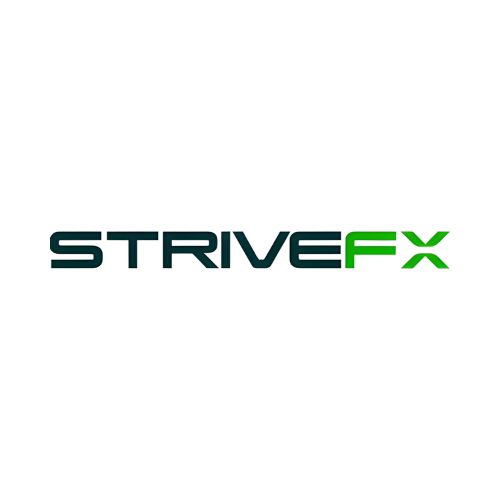Is Algo Trading a Magic Money Machine? Unveiling the Truth Behind Automated Finance
Algorithmic trading, or “algo trading” for short, has become the hottest topic in finance. This method uses complex algorithms to make lightning-fast trades based on mountains of data. But is it all hype, or can algo trading truly revolutionize your investment strategy?
The debate surrounding algo trading is fierce, with both fervent supporters and cautious critics. This post will peel back the layers, exploring the inner workings of algo trading, its fascinating history, and the advantages and concerns it raises.
We’ll delve into the mechanics of these algorithms, analyze the regulatory landscape, and even explore real-world examples. By the end, you’ll have a clear picture: is algo trading a legitimate path to financial success, or is it best left to the professionals?
What is Algorithmic Trading?

Algorithmic trading, also known as algo trading or automated trading, is a sophisticated method used by financial institutions and individual traders to execute large numbers of trade orders with incredible speed and precision. At its core, it relies on computer programs, complex algorithms, and quantitative models to make trading decisions, manage positions, and execute orders in financial markets.
Algorithmic trading has a rich history, with roots dating back to the 1970s when early trading algorithms were introduced. Over the decades, it has evolved significantly, driven by advancements in technology and a growing understanding of financial markets. From basic rule-based strategies to cutting-edge machine learning models, algorithmic trading has continuously adapted to changing market conditions.
To grasp the essence of algorithmic trading, it’s important to understand its key components and technologies. These include trading algorithms, data analysis tools, execution strategies, and risk management systems. Trading algorithms are the heart of the process, utilizing various techniques to make trading decisions based on market data, news, and other relevant factors.
Algorithms play a pivotal role in automating trading decisions. They can be designed to execute specific strategies, such as trend following, mean reversion, or statistical arbitrage. These algorithms process vast amounts of data, identifying trading opportunities and managing portfolios with a level of speed and accuracy that human traders can rarely match.
Algorithmic trading is not just a trend; it’s a fundamental shift in the way financial markets operate. It combines cutting-edge technology, extensive data analysis, and the power of automation to enhance trading efficiency and effectiveness.
Is Algo Trading Legit? A Balanced Look at the Benefits and Risks
Algorithmic trading offers a powerful tool for executing trades, but like any tool, it comes with its own set of advantages and disadvantages. Let’s take a closer look at both sides of the coin:
1. Executing Trades in a Flash (and the Potential Pitfalls)
- Pros: Algorithmic trading boasts lightning-fast execution, minimizing slippage (the difference between your intended price and the actual execution price) and capitalizing on fleeting market opportunities. Imagine being able to react to news events across the globe in milliseconds!
- Cons: This very speed can contribute to market volatility, especially in high-frequency trading (HFT) where algorithms can trigger rapid-fire buy and sell orders. Additionally, high-speed trading can exacerbate liquidity issues in markets with lower trading volume.
2. Algorithmic Objectivity vs. Human Intuition
- Pros: Algorithms operate devoid of emotions like fear and greed, which can cloud human judgment and lead to impulsive trading decisions. This can result in more consistent and disciplined trading compared to relying solely on human intuition.
- Cons: While emotions can be detrimental, human intuition shouldn’t be entirely discounted. There can be unforeseen circumstances or black swan events that algorithms might struggle to adapt to.
3. Spreading Your Bets (But Don’t Overdo It)
- Pros: Algorithmic trading excels at diversification. It can automatically execute trades across various assets, strategies, and even global markets. This reduces your dependence on any single investment and helps mitigate risk. Imagine having an algorithm that can invest in stocks, bonds, and even cryptocurrencies simultaneously, all based on predefined parameters.
- Cons: Diversification is a powerful tool, but it’s not a magic formula for guaranteed profits. Spreading yourself too thin across too many assets can dilute potential gains. For instance, a highly diversified portfolio might miss out on significant gains from a breakout stock if it only allocates a tiny percentage to that specific asset.
4. Managing Risk vs. Market Mayhem
- Pros: Algorithmic trading can be a valuable risk management tool. You can program stop-loss orders and other risk controls to automatically exit positions when they reach a certain threshold, helping you limit potential losses.
- Cons: High-frequency trading (HFT), a specific type of algorithmic trading, can contribute to increased market volatility. These algorithms can trigger rapid-fire trades in milliseconds, causing sudden price swings and making it difficult for human traders to react effectively. A real-world example might be the “Flash Crash” of 2010, where the Dow Jones Industrial Average plunged over 600 points in minutes, partly attributed to HFT activity.
5. Safeguarding Markets vs. Algorithmic Abuses
- Pros: Regulations play a crucial role in safeguarding markets from manipulation and protecting traders. Regulatory bodies worldwide are constantly working to establish and enforce rules governing algorithmic trading activities. This helps ensure fair and transparent markets for everyone.
- Cons: Not all algorithms play by the rules. Some might exploit loopholes in regulations to gain an unfair advantage. Additionally, ethical concerns arise when algorithms are used for manipulative practices like spoofing (placing fake orders) or front-running orders (executing trades ahead of client orders).
6. Human vs. Machine: A New Era for Traders?
- Pros: The rise of algorithmic trading has created new job opportunities for programmers, quants (financial mathematicians), and system developers who design, build, and maintain these complex trading algorithms.
- Cons: Traditional trading jobs might become less prevalent as algorithmic trading becomes more sophisticated. Human traders may also find it increasingly challenging to compete with the speed and precision of algorithms, especially in high-frequency trading environments.
The legitimacy of algorithmic trading ultimately depends on how it’s used and the safeguards in place. Like any tool, it can be used for both good and evil. Regulatory bodies worldwide aim to strike a balance by imposing rules and regulations to govern algorithmic trading activities. This helps ensure fair and transparent markets while reducing the potential for market manipulation and abuse.
While the advantages of algorithmic trading are clear, it’s essential to be aware of its potential drawbacks and the ethical considerations associated with its use.
Regulatory Environment
Understanding the regulatory landscape surrounding algorithmic trading is crucial for evaluating its legitimacy. Financial markets worldwide are subject to an array of regulations and guidelines, each designed to maintain market integrity, protect investors, and ensure fair trading practices. Some key aspects of financial regulations include:
Securities and Exchange Commissions (SEC): In the United States, the SEC plays a central role in regulating securities markets. It oversees the implementation of regulations aimed at protecting investors, maintaining fair and efficient markets, and facilitating capital formation.
Commodity Futures Trading Commission (CFTC): The CFTC focuses on regulating commodity futures and options markets in the United States. It enforces rules to prevent market manipulation, fraud, and unethical trading practices.
MiFID II: In the European Union, the Markets in Financial Instruments Directive (MiFID II) sets out extensive regulations for financial markets, including rules that apply to algorithmic trading. MiFID II aims to enhance transparency, protect investors, and ensure the orderly functioning of financial markets.
The Role of Regulatory Authorities
Regulatory authorities worldwide are responsible for supervising financial markets and enforcing regulations related to algorithmic trading. These authorities monitor trading activities, investigate potential violations, and develop new rules to adapt to the changing landscape of algorithmic trading.
Key regulatory bodies include:
Financial Industry Regulatory Authority (FINRA): In the United States, FINRA oversees broker-dealers and the securities industry. It plays a critical role in regulating the use of technology and algorithms in trading.
Prudential Regulation Authority (PRA): In the UK, the PRA focuses on regulating banks and other financial institutions to ensure stability in the financial system.
Hong Kong Securities and Futures Commission (SFC): The SFC oversees Hong Kong’s securities and futures markets and enforces regulations designed to maintain market integrity.
Compliance and Reporting Requirements
Algorithmic trading operations are subject to various compliance and reporting requirements to ensure transparency and accountability. Regulatory bodies require firms engaged in algorithmic trading to adhere to strict standards. Compliance measures include:
- Pre-trade risk controls: Firms must have risk management controls in place to prevent erroneous orders and excessive risk-taking.
- Reporting obligations: Regulatory authorities often require firms to report algorithmic trading activities, including the details of trades and trading strategies.
- Supervision and testing: Regulators may mandate that firms conduct regular testing of their algorithms to ensure compliance with regulations.
Recent Regulatory Changes
The regulatory environment surrounding algorithmic trading is constantly in flux, adapting to the ever-changing nature of financial markets. Recent changes and proposed regulations aim to address critical issues like market manipulation, system safeguards, and ensuring market transparency.
For example, in the United States, the Securities and Exchange Commission (SEC) has recently increased its focus on identifying and preventing manipulative algorithmic trading patterns. This includes stricter scrutiny of algorithms that exhibit suspicious trading behavior or exploit loopholes in existing regulations.
It’s important to remember that algorithmic trading regulations are not uniform across the globe. Some regions, like the European Union with its Markets in Financial Instruments Directive (MiFID II), have implemented stricter controls on high-frequency trading and transparency requirements. Understanding the specific regulations in your jurisdiction is crucial for anyone considering algorithmic trading.
By staying informed about these evolving regulations, you can ensure your algorithmic trading activities are compliant and contribute to a fair and transparent market environment.
Should You Consider Algorithmic Trading?
Algorithmic trading isn’t a magic bullet – it’s a powerful tool best suited for specific traders. Here’s a breakdown to help you decide if it fits your profile:
-
Institutional Investors: For major institutions, algorithmic trading is practically essential. These algorithms can efficiently execute massive orders and tailor complex strategies to their specific needs. Imagine automatically managing billions of dollars in assets with lightning-fast precision.
-
Retail Investors: For retail investors, algorithmic trading can be a double-edged sword. It offers automation and time-saving benefits, but it requires technical know-how. You’ll either need programming skills to build your own algorithms or access to pre-built algorithmic trading platforms. Think of it as having a helpful robot assistant, but you’ll need to know how to program it effectively.
-
High-Frequency Traders: High-frequency trading (HFT) relies heavily on algorithms for lightning-fast millisecond trades. This strategy demands cutting-edge technology, deep market understanding, and the ability to navigate fierce competition. Think of HFT as racing Ferraris on a virtual stock exchange – exhilarating but requiring immense skill and resources.
Before You Dive In: Essential Considerations
Before taking the algorithmic plunge, here are some crucial factors to weigh:
- Technical Skills: Algorithmic trading often requires knowledge of programming languages and software tools to develop your own algorithms.
- Risk Tolerance: Algorithmic trading can be volatile, so assess your risk tolerance and establish robust risk management strategies.
- Data and Infrastructure: Reliable market data and a strong technology infrastructure are essential for algorithmic trading success.
- Capital and Costs: Factor in your available capital alongside data fees and platform charges associated with algorithmic trading.
- Trading Strategy: Have a clear trading strategy in mind, or consider seeking expert guidance to design effective algorithms.
- Regulations: Stay informed about and comply with algorithmic trading regulations in your jurisdiction.
Beyond the Algorithm: Exploring Alternative Strategies
Algorithmic trading isn’t the only path to financial success. Here are some popular alternatives:
- Manual Trading: For those who prefer a hands-on approach, manual trading allows you to rely on your intuition and market analysis.
- Copy Trading: Replicate the trades of experienced investors with copy trading, leveraging their expertise without actively managing your own portfolio.
- Passive Investing: Invest in index funds or ETFs for long-term growth and diversification with minimal active management. This approach is like planting a well-diversified garden and letting it flourish over time.
- Long-Term Investing: Focus on buying and holding individual stocks or assets for years, aiming for gradual growth rather than frequent trading activity. Think of this as building a brick-and-mortar business for long-term stability.
The Choice is Yours
Ultimately, the decision to embrace algorithmic trading depends on your individual goals, resources, and risk tolerance. By carefully considering the factors mentioned above and exploring alternative strategies, you can make an informed choice that aligns with your investment journey.
Algorithmic Trading: Friend or Foe? You Decide
The world of algorithmic trading can be both alluring and intimidating. By now, you understand the regulatory landscape and the importance of fair, transparent markets. Remember, compliance isn’t just about following the rules; it’s about protecting the entire financial ecosystem.
But is algo trading right for you? Here’s the bottom line:
- Know Your Type: Institutional investors leverage algorithms for efficiency and complex strategies. Retail traders can benefit from automation, but technical skills or platform access are necessary. High-frequency trading requires a fierce technological edge and deep market knowledge.
- Before You Begin: Assess your technical skills, risk tolerance, and financial resources. Reliable data, strong infrastructure, and a clear trading strategy are crucial. Don’t forget to understand and comply with relevant regulations.
Beyond Algorithmic Horizons
Algorithmic trading isn’t the only path to success. Explore these alternatives:
- Manual Trading: For the hands-on investor, manual trading allows you to hone your intuition and analysis skills.
- Copy Trading: Replicate the trades of experienced investors and leverage their expertise.
- Passive Investing: Invest in index funds or ETFs for long-term growth with minimal management.
- Long-Term Investing: Focus on buying and holding assets for years, aiming for gradual, steady growth.
The Algorithmic Advantage (or Not)
The legitimacy of algorithmic trading hinges on its use and ethical considerations. It can be a powerful tool for efficient and effective trading, but it comes with responsibility.
Remember: Success lies in understanding the tool, using it responsibly, and staying compliant. Ultimately, whether you become an algorithmic ally or explore a different trading path, the choice empowers you to navigate the financial markets with confidence.




